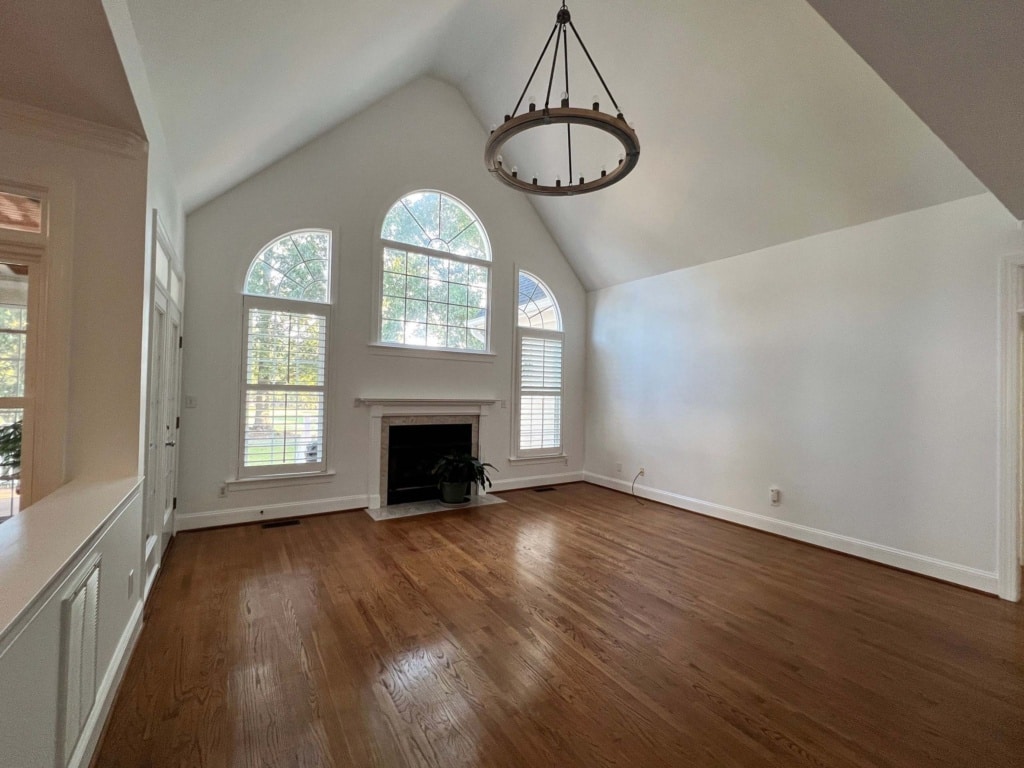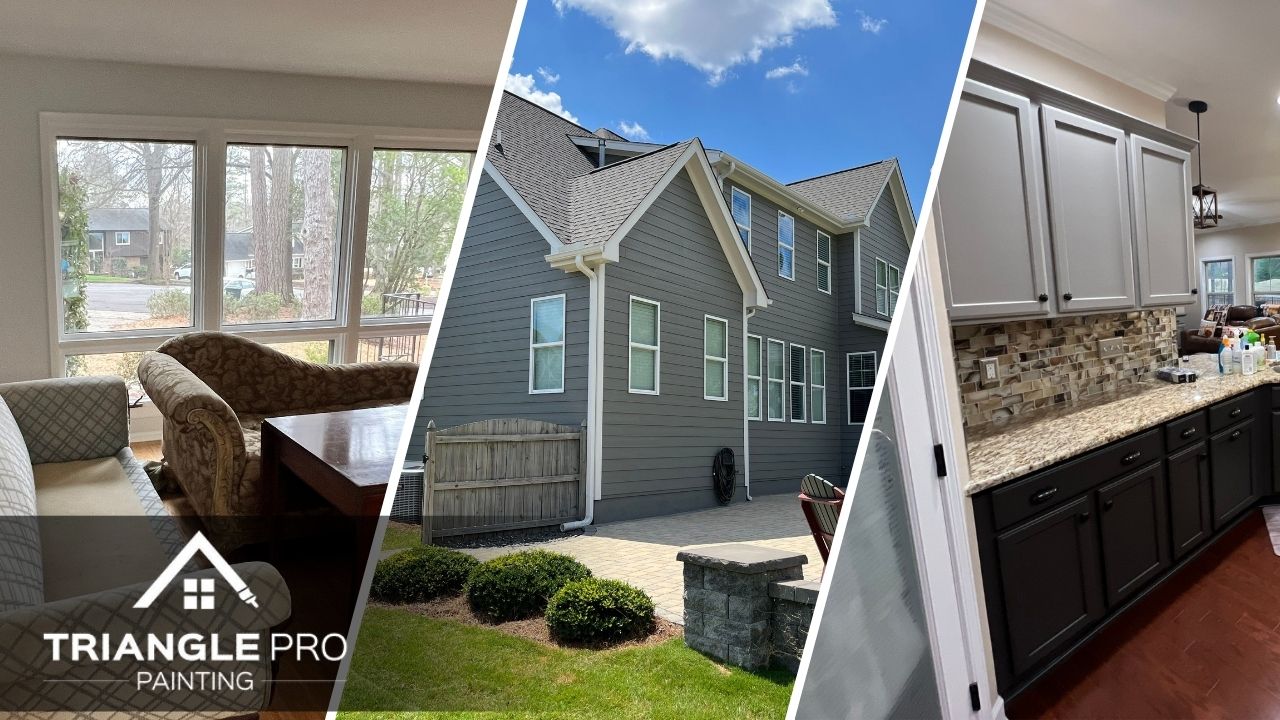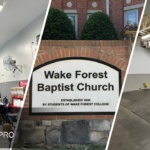You’ve finally decided that the mustard yellow accent wall in your dining room has got to go. Or perhaps your home’s exterior has faded faster than you imagined. Either way, you’re ready to hire a professional painter in the Triangle area, and you want to make sure you’re entrusting your home to the right hands.
But how exactly do you separate the professional painters from the “guy with a paintbrush and a pickup truck” operations? What questions should you ask to ensure you don’t end up with a paint job that looks worse than a Duke fan at a UNC victory party?
At Triangle Pro Painting, we’ve been on both sides of this conversation countless times. We’ve seen the relief on homeowners’ faces when they find the right painting partner, and we’ve heard the horror stories from those who wished they’d asked more questions before hiring the wrong one. This guide isn’t just about helping you find a painter – it’s about helping you find the RIGHT painter for your specific Raleigh area home and needs.
So let’s explore the questions that will lead you to painting bliss rather than project purgatory. And yes, we promise to make this as entertaining as discussing paint can possibly be – which, contrary to popular belief, is actually quite a lot when you’re talking about protecting your biggest investment.
Beyond “How Much Will It Cost?”: The Questions That Really Matter
Let’s address the elephant in the room first: Yes, cost matters, but you’re ignoring the factors that really determine whether you’ll enjoy the experience.
The Foundation Questions: Experience and Specialization
Question #1: “How long have you been painting homes specifically in the Triangle area?”
Why this matters: The Raleigh-Durham-Chapel Hill area presents unique challenges that painters from other regions might not understand. Our humid summers, mild but damp winters, and distinctive housing styles demand local knowledge.
Look for: Painters with at least 5+ years of experience specifically in the Triangle area who can speak knowledgeably about local conditions.
Red flag: Vague answers like “I’ve been painting forever” without specific local experience.
Question #2: “What types of homes do you specialize in painting?”
Raleigh isn’t just any housing market – we have unique architectural styles that present specific painting challenges. From historic homes in Oakwood to mid-century ranches in North Hills to contemporary new builds in Wake Forest, each style demands different approaches.
Look for: Painters who can readily discuss experience with homes similar to yours in age, style, and construction materials.
Red flag: The “we do everything equally well” claim. Even the best painters typically develop specialties.
Question #3: “Can you walk me through how you would approach my specific project?”
This question reveals whether a painter has a systematic approach or is just winging it. The answer should include multiple stages and considerations specific to your home.
Look for: A detailed, thoughtful response that addresses the unique aspects of your home rather than a one-size-fits-all approach.
Red flag: Oversimplified answers like “We’ll scrape, prime, and paint” without addressing specifics.
The Quality Questions: Materials and Methods
Question #4: “What paint brands and product lines do you recommend for my specific needs, and why?”
This question does double duty – it reveals the painter’s knowledge of materials and shows whether they tailor recommendations to your specific situation.
In North Carolina’s climate, paint selection is particularly critical. Our humidity and significant sun exposure put exceptional stress on exterior paints, while our tendency toward energy efficiency makes low-VOC options more important for interiors.
Look for: Specific brand and product line recommendations with clear explanations of why they’re appropriate for your project. Bonus points if they mention North Carolina-specific considerations.
Red flag: Willingness to use the cheapest option without discussing performance differences.
Question #5: “How many coats of paint do you typically apply, and what factors might change that?”
This seemingly simple question reveals a painter’s commitment to quality versus speed.
Look for: An explanation that includes assessment of your current paint, color changes, and surface conditions.
Red flag: A one-size-fits-all answer or reluctance to apply additional coats if needed for proper coverage.
Question #6: “What steps do you take to ensure clean lines and protect surfaces not being painted?”
The difference between an amateur and a professional often comes down to masking techniques and attention to detail. This question reveals how much care goes into the precision aspects of painting.
Look for: Detailed description of tape types for different surfaces, drop cloth usage, and protection methods for fixtures and hardware.
Red flag: Vague assurances without specific techniques or comments like “We’re really careful” without explaining how.
The Process Questions: Proposals, Crews, and Timelines
Question #7: “What will be included in your written proposal, and how detailed will it be?”
A professional painting proposal should be comprehensive enough that you could almost use it as a blueprint for the project. This question separates the professional operations from the fly-by-night crews.
Look for: Confirmation that you’ll receive a detailed proposal including specific surfaces to be painted, paint products, number of coats, preparation procedures, approximate timeline, payment terms, and warranty details.
Red flag: Reluctance to provide a detailed written proposal or pressure to accept a verbal agreement.
Question #8: “Who will actually be doing the painting, and will you be on-site?”
The person giving you the estimate may not be the person painting your home. Understanding the crew structure and supervision is critical.
Look for: Clarity about who will be on-site daily, whether crew members are employees (not day laborers), and how the estimator or owner will be involved in oversight.
Red flag: Vagueness about who will actually perform the work or indications that the estimator hands off projects entirely.
Question #9: “How do you schedule projects around North Carolina’s weather challenges?”
This Triangle-specific question is crucial for exterior projects but relevant for interiors too. Our unpredictable spring storms and summer humidity demand flexible scheduling and contingency planning.
Even for interior projects, extremely humid days can affect paint performance, especially in older Triangle homes with less insulation.
Look for: Honest discussion of weather considerations, flexible scheduling approaches, and contingency plans for weather delays.
Red flag: Rigid scheduling without acknowledgment of weather variables or promises that seem too good to be true.
The Protection Questions: Insurance, Warranty, and References
Question #10: “Can you provide proof of insurance, and what specifically does it cover?”
This question isn’t just a formality – it’s essential protection for you as a homeowner. The answer reveals whether you’re dealing with a legitimate business or someone operating without proper coverage.
Look for: Willingness to provide current certificates of insurance for both general liability and workers’ compensation, with coverage limits appropriate for your project size.
Red flag: Hesitation to provide proof, under-insured coverage amounts, or suggestions that your homeowner’s insurance will “cover anything that happens.”
Question #11: “What kind of warranty do you offer, and what specifically does it include and exclude?”
The warranty question separates painters who stand behind their work from those who don’t. It also reveals how confident they are in their materials and methods.
Look for: Written warranty information with specific terms, typically 1-3 years for interior and 2-5 years for exterior, with clear explanations of what is and isn’t covered.
Red flag: Verbal-only warranty promises, extremely limited coverage, or warranty that only covers materials but not labor for repairs.
Question #12: “Can you provide references from similar projects in my specific area of the Triangle?”
References from your neighborhood or homes similar to yours provide the most relevant feedback. This question tests whether the painter has established a positive reputation in your community.
Look for: Willingness to provide multiple references specific to your area or type of home, ideally from projects completed at least a year ago (recent enough to be relevant but not so recent that problems haven’t had time to emerge).
Red flag: Reluctance to provide references, references only from brand new projects, or references exclusively from areas unlike yours.
The Communication Questions: Expectations and Problem-Solving
Question #13: “How will we communicate during the project, and how often?”
Effective communication prevents most painting disasters. This question establishes expectations for staying informed and addressing concerns.
Look for: Clear communication protocols including a dedicated contact person, regular update schedule, and multiple ways to reach them (phone, email, text).
Red flag: Vague communication promises, indications that you’ll need to track them down for updates, or comments suggesting you should just “let them work” without regular check-ins.
Question #14: “What happens if I’m not satisfied with something during or after the project?”
This question reveals how the painter handles challenges and whether they have established problem-resolution processes.
Look for: A systematic approach to addressing concerns, willingness to make reasonable adjustments, and emphasis on your satisfaction.
Red flag: Defensiveness, minimizing the likelihood of problems, or suggesting you’re being “too picky” for asking.
The Triangle-Specific Questions: Local Knowledge That Matters
Question #15: “How do you adapt your approach for North Carolina’s humidity and climate?”
This locally-focused question evaluates whether the painter truly understands our unique climate challenges. North Carolina’s humidity variations and significant UV exposure require specific adaptations.
Look for: Specific seasonal adaptations such as different paint formulations for summer versus fall projects, humidity control for challenging periods, and realistic seasonal timelines.
Red flag: One-approach-fits-all answers that don’t acknowledge seasonal differences in our region.
Question #16: “Are you familiar with Raleigh historic district requirements (if applicable)?”
For homes in Raleigh’s historic districts like Oakwood, Boylan Heights, or Glenwood-Brooklyn, this question is crucial. Historical designation can severely restrict color choices and material options.
Look for: Familiarity with historic district regulations in your specific neighborhood and experience navigating the approval process if required.
Red flag: Unfamiliarity with historic requirements or suggestions to “just go ahead” without proper approvals.
The Questions Behind the Questions: What You’re Really Trying to Discover
While the specific questions above will help you gather important information, what you’re really trying to assess can be boiled down to a few key qualities:
Professionalism: Is this a real business or someone with a paintbrush and a pickup truck?
True professionals have systems for everything – from how they answer the phone to how they clean their brushes. They have proper insurance, detailed contracts, and clear communication protocols. Their business infrastructure suggests they’ll still be around when you need them in the future.
Expertise: Do they truly understand painting at a technical level?
Expert painters can explain why certain products work better in specific situations. They understand surface preparation, application techniques, and problem-solving. They continue learning about new products and methods rather than doing things “the way they’ve always been done.”
Fit: Are they the right painter for YOUR specific project?
Even excellent painters specialize in certain types of work. Some excel at historic restorations while others focus on new construction. Some have systems optimized for large projects while others specialize in detailed custom work. Finding the right fit means matching their strengths to your specific needs.
Red Flags That Should Send You Running for the Hills
Beyond the specific red flags mentioned above, watch for these general warning signs during your conversations with potential painters:
- Pressure tactics: Quality painters are busy, but legitimate professionals don’t pressure you to decide immediately.
- No physical address: Legitimate businesses have real addresses in the Triangle area, not just P.O. boxes or “mobile offices” (their truck).
- Large upfront payments: While deposits are normal (typically 10-30%), requests for more than a third of the total upfront often indicate cash flow problems.
- Cash-only or unusual payment methods: Professional painting companies have normal business banking relationships and accept checks or credit cards.
- Too-good-to-be-true pricing: Dramatically lower estimates usually mean corners will be cut somewhere – often in preparation work that you won’t see until problems emerge later.
Triangle area contractor investigator Thomas Jensen adds this warning: “In our area, we see a seasonal influx of ‘storm chasers’ – traveling crews who arrive after hurricane season claiming to specialize in repair painting. These operations often disappear before warranty issues arise.”
Bringing It All Together: Evaluating the Responses
After asking these questions, take time to compare responses between contractors. Look beyond the literal answers to these deeper indicators:
- How thoroughly did they answer? Detailed responses typically reflect thoughtful approaches to the actual work.
- Did they ask YOU questions? The best painters interview you as much as you interview them to ensure proper project understanding.
- How comfortable were they with technical questions? Hesitation or vagueness often indicates knowledge gaps.
- Did they educate you during the conversation? Top professionals naturally share knowledge rather than being secretive about their methods.
The Triangle Pro Painting Difference: Answers You Deserve
At Triangle Pro Painting, we welcome these questions and more. We believe educated clients make the best partners, and we’re always happy to explain our methods, materials, and approach. Our commitment to transparency means you’ll always get straight answers without the sales pressure or vague assurances that characterize less professional operations.
Whether you choose our services or another quality painting contractor, asking these questions will lead you toward a successful project and a beautifully refreshed home that stands up to whatever North Carolina weather comes your way.
Remember – when it comes to painting your Triangle area home, the quality of the questions you ask before the project begins often determines the quality of the results you’ll enjoy for years to come. Happy painter hunting, Raleigh!











